we were looking forward to a day of not hiking on the coast path; instead, we got up and headed over to St. David’s Cathedral, hoping to beat the crowds.
first, a hearty breakfast of poached eggs on toast. mmm, it was a tasty start to the day.
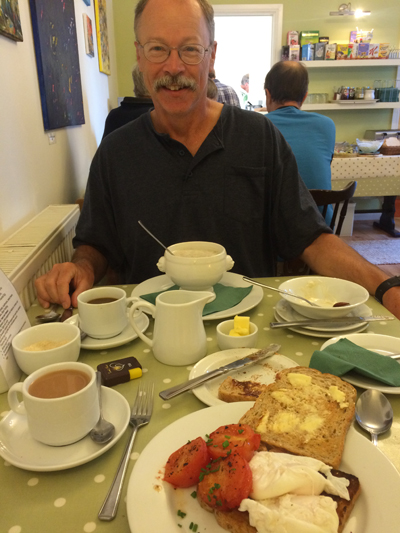
we walked over to St. David’s Cathedral around ten in the morning, and the crowds weren’t bad at all yet. another sunny and glorious day!

there has been a cathedral on the site since the 6th century, and they’ve had prayers and services for the past 1500 years. a pretty long time.
my goal was to get some photos without people in them which wasn’t so hard to do.
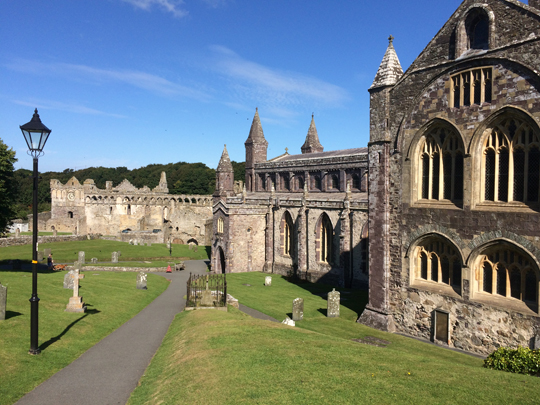
here’s some background on St. David:
David was born in the year 500, the son of St Non and a prince of Ceredigion. Legend states that Non gave birth to him on a cliff top during a violent storm. The present cathedral stands on the site of the monastery he founded in the inhospitable area known as ‘Glyn Rhosyn.’ David and his followers lived a simple life; they refrained from eating meat or drinking beer. David’s symbol, now a national symbol of Wales, is the leek.
David rose to become a bishop in the church and made several pilgrimages including one to Jerusalem during which, tradition states, he brought back with him a stone which now sits in an altar in the south transept of the cathedral.
The best known miracle associated with David is said to have taken place when he was preaching in the middle of a large crowd at the Synod of Llanddewi Brefi. When those at the back complained that they could not hear him, the ground on which he stood is reputed to have risen up to form a small hill so that everyone had a good view. A white dove settled on his shoulder, a sign of God’s grace and blessing.
David died in the year 589 and the monastery is said to have been ‘filled with angels as Christ received his soul’. His final words to his followers were: ‘Be Joyful. Keep the Faith. Do the little things that you have heard and seen me do.’
his mother, as state above, was St. Non. More on her in the next post.

i took this picture because i spotted the two greyhounds there at the bottom. there isn’t much in explanation about this saint, st. caradog on the placard next to it.

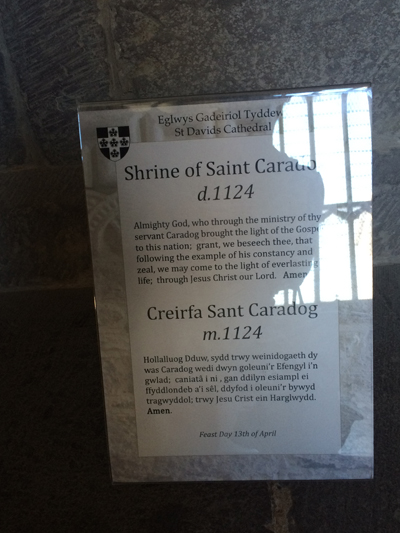
but this is what wikipedia had to say:
Caradoc was a Welsh nobleman, native of Brecknockshire, who, after he had received a liberal education, enjoyed the confidence of Rees, prince of South Wales, and held an honourable place in his court. The prince one day, on account of two greyhounds which were lost, fell into such a fury against Caradoc as to threaten his life. Caradoc, from this disgrace learned the inconstancy of worldly honours, and repaired to Landaff, where he received from the bishop the clerical tonsure, and for some time served God in the church of St. Theliau.[2]
Desirous of finding solitude, he afterwards spent some years in a little hut, which he built himself, near the abandoned church of St. Cendydd Church[2] in Gower, later taking up residence on Barry Island at St. Issels. His reputation for sanctity filled the whole country, and the archbishop of Menevia, or St. David’s, calling him to that town, promoted him to priestly orders. Caradoc then retired with certain devout companions, to the isle of Ary. Certain pirates from Norway, who often infested these coasts, carried them off prisoners, but, fearing the judgments of God, safely set them on shore again the next day. However, the archbishop of Menevia assigned the saint another habitation in the monastery of St. Hismael, commonly called Ysam, in the country of Ross, or Pembrokeshire.[2]
He served a local king in southern Wales before Caradoc was later forced into exile by Henry I’s invasion of the region, Caradoc went to Haroldston, where he occupied the cell of St. Ismael.
so hmm, are the greyhounds in the photo because two of them were lost? i’d hoped that this saint was like st. francis of asissi.
i love this parchment, and took a closeup because i’d someday like to do some decorative painting on furniture, and use something like this. an easy little project, i’m sure.


these are bishops’ staffs, some of the most valuable stuff in the collection.
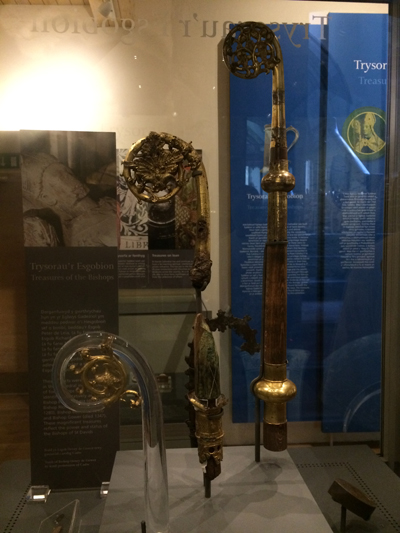
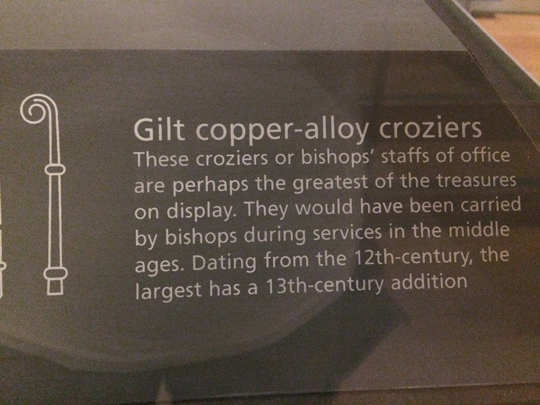

it was tricky getting a good shot of the spectacular ceiling, and i took so many pictures trying to get a good one.
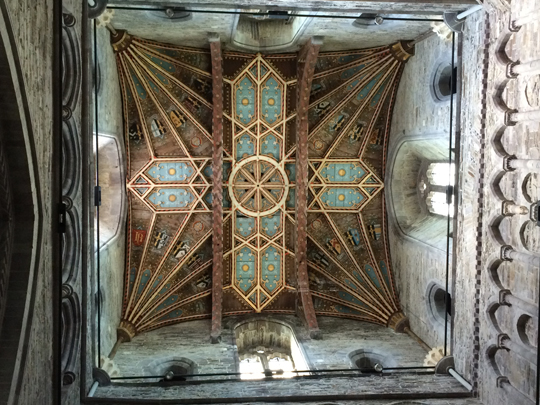
we were there about an hour, and as you can see, it was a lot harder to get photos without other people in them. i did take lots of photos, but i just wanted to give you a sampling of the church. also, i found it interesting that two pilgrimages to st. david’s are the equivalent of one to jerusalem.
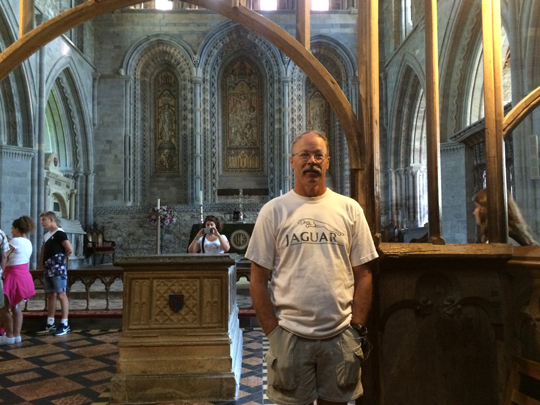
a little stream outside the walls.
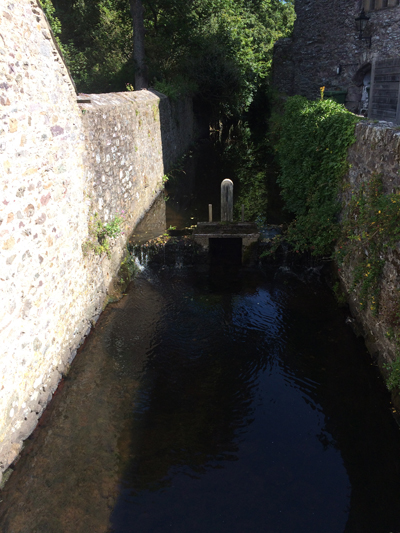
i read many things talking about st. david’s being the smallest city in Britain, but just read that it was called a city in the 16th century, but then that was taken away in 1888, and only recently became a city again in 1995. so it’s sort of a very new city, and also a little town filled with tourists.
next will be the ruins of the bishop’s palace next door.
ok then,
mrs. g. hughes.
